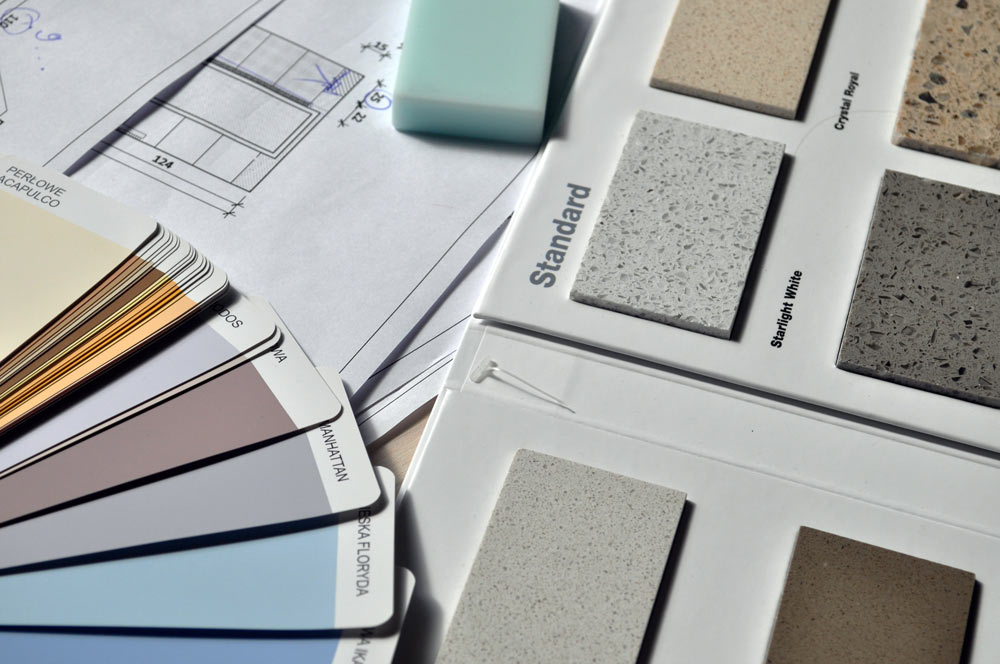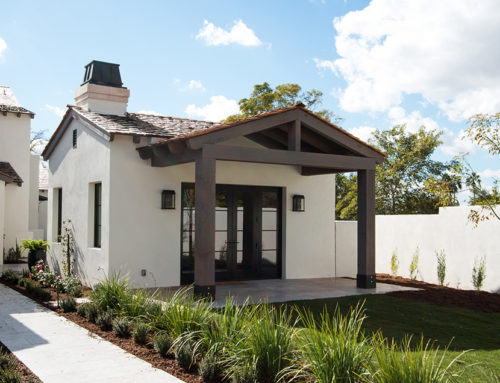Up until this point, building your dream home doesn’t sound anything remotely like what you’ve seen on HGTV. Unfortunately looking at zoning map, soil report, and survey map isn’t sexy enough to attract eyeballs and sell ads. Now that you have an idea what neighborhood you want to be and what kind of home you’d like to build, it’s time to get to the fun stuff!
Establish a Budget
Sit down with your significant other and have a rough idea what your budget is for the new build. Ask your lender, architect, contractors, someone who has done it before and start to triangulate down a range for your area. I would estimate the following:
- Land – roughly 20 – 30% of the finished home
- Labor & Material – Aka hard costs. I would say about another 30%. When someone quotes you a price, be sure to ask “what does that include?” Sometimes they mean just hard cost, sometimes they mean all in with the soft costs included, sometimes the contractor leave out his overhead and general conditions.
- Soft costs – here’s where all your architectural, engineering, and permit fees go. Holding costs such as property tax you pay on the property while getting the home built or construction loan financing costs go here as well. For a normal single family home, I would budget maybe 20% of your hard costs. If you’re doing a lot split and building multiple homes like I mentioned previously, you can dial it down a bit.
FYI there is no way for me to predict down to the penny what your build cost will be as they varies widely depending on which part of the country you are in. Please please no angry emails if this doesn’t quite fit the budget you’re looking at.
Be sure to include a contingency of about another 10% in there. Labor and material prices fluctuate. Also when architects or engineers are busy they tend to charge a little bit more or sometimes there is a permit fee you overlooked.
Assemble the Avengers
Start with the architect first. Having a good architect will make your life so much easier down the line and the process much more enjoyable. Sloppy architects or ones that aren’t super familiar with the local building code will make you want to pull your (and their) hair out with all the different revisions or RFI (request for information) from your contractor.
You will most likely also need a civil engineer to design the grading and irrigation of the lot, an MEP engineers to layout the plumbing, HVAC, and electrical work for you home. A landscape architect and interior designer would also be helpful if this is not part of your architect’s expertise.
Also start interviewing general contractors who has done new builds before. They might not be able to give you an exact bid without seeing the plans, but hopefully they can give you a ballpark between low and high end finishes from their experiences. After you get your permit, the GC becomes the most important person on your team.
In general, unless it’s someone I’ve worked with before or trust I will get three bids for everything. Don’t always just compare on price as well; the cheapest guy might not always be the best. Evaluate the experience and body of work along with how quick their turnaround time is. If at all possible, I like to work with a referral first. I have also done it before where I am having an extremely difficult time finding someone I will look up the public permit records. Often times I can quickly spot an architect or civil engineer who has done and submitted multiple projects in the city. There’s a good chance they know what they’re doing that’s why multiple people have used them. It’s still nice to ask them for a couple of references as well and check to see if their licenses are in good standing.

Design Like You’re Joanna Gaines
Meet with your architect and go over all the different design elements–size of the home, 1 vs 2 story, how many bedrooms and bathrooms, and the amenities you’d want such as counter space, pantry, kitchen island, wet bar, home office, walk-in closet, etc. Have your must have’s vs nice to have’s on a list. Also include some don’t wants. I’ve find it constraints actually boosts creativity.
If you’ve got some ideas stored away on Pinterest, don’t be shy, share them with the architect. They could probably tell you ahead of time if you want to use stone or concrete it’ll cost 3x regular wood house or those exposed beams will run you an extra $100,000.
Obtain Entitlement
Again, the steps and processes are different for every city and type of project. Some places you have to go through some kind of community review or public hearing regardless what you’re building; sometimes if everything is by the book and you are not asking for any variances a planning department staff can review everything. All in all, I would expect maybe 6-9 months to get your permit. The planning and the building department will both kick the plans back with some comments a couple of rounds that your team will have to address. If you’re in a big city like Los Angles, San Jose, and Oakland maybe budget longer like a year or year and a half. If you’re San Francisco… good luck.
Start Construction
Once you pay all your fees and have your permit, it’s GAME ON! Get everything in writing with your contractor. It wouldn’t hurt to check up on the site once in awhile. I’m a big believer in you inspect what you expect.
Avoid change order if you can. Definite for the big stuff like if you have to move a wall or plumbing that will run you some major cash. However, some small change order is unavoidable though. Maybe the paint you loved in the computer rendering just doesn’t quite sparkle the same way in real life when the afternoon sun hits it. No matter how good your plans are, stuff will still happen or something unexpected come up. Just remember to breathe, and every problem has a solution.
If you have a construction loan, make sure you stay in communication with all parties involved and stay on top of the draw schedule. Withhold a small percentage at the end. Only when everything is completed per contract do you release the last 10% or so. Chances are if you have already paid everything and something needs to be fixed the contractor is already on to the next job.





